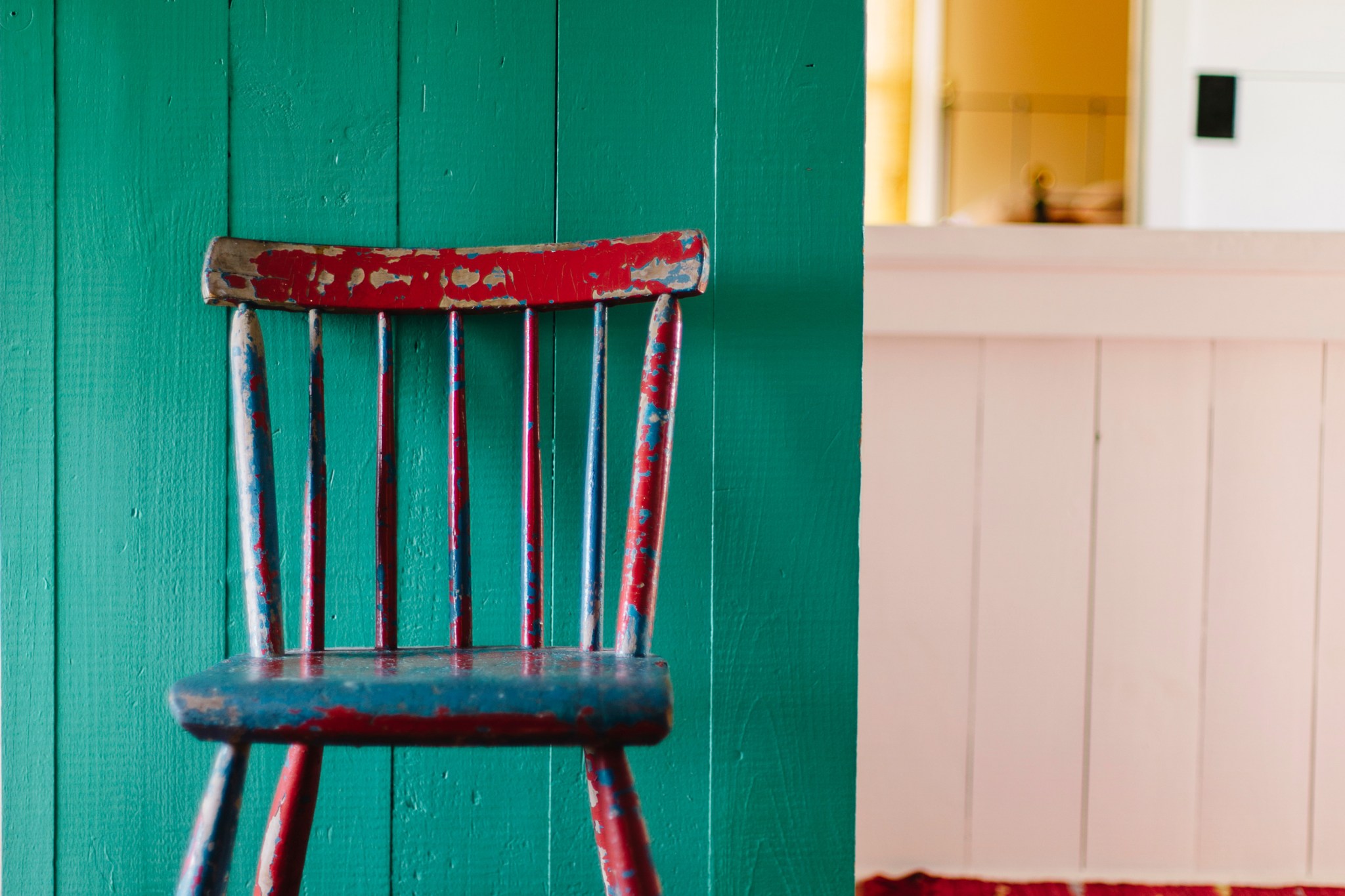Did you know that a little paint can perk up carpets, appliances, and even vinyl floors? With proper prep, you can paint just about anything in your house. Here are seven of our favorite house paint ideas to give new life to old things:
#1 Door, Drawer, and Cabinet Hardware
Spray paint can turn builder-grade brass locks and hinges into fashion-forward hardware with an oil-rubbed bronze, pewter, or stainless look.
- Insert the door lock’s spindle into a square of Styrofoam, which will hold it upright while you spray around the knob.
- Before you paint, insert a tiny strip of painter’s tape into the keyhole to make sure paint doesn’t gunk it up.
- Prime with a metallic primer, then paint with metallic spray paint.
#2 Brick Fireplace
When you paint your red brick fireplace, you transform the entire room. But beware! Once you paint brick, it’s nearly impossible to return it to the original brick color. (And you should probably never paint your home's brick siding).
You can paint brick a single color, or achieve some variation — like the variations in real brick — by sponging on slightly lighter and darker hues.
- Paint with a semi-gloss latex.
- Buy twice what you think you’ll need; brick is porous and drinks paint.
- Wear safety glasses and gloves when cleaning anything with a metal brush.
#3 Ceramic Tile
Imagine how sweet it is to update ceramic tile without having to bust up and cart away tons of old tile.
Play it safe and avoid painting tiles in high-traffic and high-moisture areas. Some good places are laundry room floors, backsplashes under cabinets (but not above ranges where pasta sauce splatters), and walls around tubs you rarely use.
- Get a smooth look by applying paint in zigzags, then rolling down in one, smooth motion.
- Use 240-grit wet/dry sandpaper for prep and between coats.
- Remember to wear safety goggles and a mask when sanding tiles.
#4 Wood Floors
When wood floors are beyond another refinishing, painting can give them a second life — and give you a chance to add a personal touch to your home.
- Before you commit to a paint color, paint a large piece of foam board with a sample of your desired color and put it on the floor to get a good idea what the finished floor will look like.
- Tint your primer to reduce the number of coats of latex enamel floor paint you'll need.
- It takes each coat about 24 hours to dry completely. So don’t jump the gun when applying the next, thin coat.
- Your painted floor won’t completely cure for almost a month, so hold off on moving back heavy things like pianos and chests of drawers.
- Protect your painted floor by putting mats down at the sink (wood and paint hate water) and high-traffic entryways.
#5 Carpet
We love the idea of covering stains and reviving a carpet with upholstery paint. It saves hundreds of dollars and the hassle of getting rid of an old carpet.
- Don’t confuse upholstery paint, good for carpets, with fabric paint, good for T-shirts.
- If you get heavy handed and paint clumps, loosen the area with a bristle brush and dab up excess paint.
- Six cans of spray paint will cover an 8-foot-by-10-foot carpet with at least two coats.
#6 Vinyl Floors
Painting is an inexpensive way to get a few more years out of old vinyl floors in kitchens and laundry rooms.
- Paint with a porch/floor paint.
- Save your back when sanding floors by using a sanding pole, like the ones drywall installers use.
- Highly textured vinyl floor may require another sanding and a second coat of primer.
#7 Appliances
Heat-resistant appliance paint will perk up your kitchen. Use an indoor appliance paint to change colors, or a liquid stainless steel application to give your appliance the stainless steel look.
Use a roller for small touchups. Two or three thin coats of spray paint is better for total appliance coverage.
- Make sure the front of your appliance is metal, not plastic. Plastic exteriors will require priming, while appliance paint will stick more easily to metal exteriors.
- If you’re spray painting, haul the appliance outdoors to avoid getting paint on cabinets and floors. If you paint indoors, open windows to assure proper ventilation.
- For the stainless look, Liquid Stainless Steel is the go-to product. It’s got real flakes of stainless steel. Apply with a brush.
